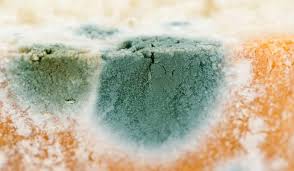Indoor Air Pollution May Increase Asthma Symptoms
© HealthyMuslim. See Terms and Conditions

Outdoor pollution is well known to be detrimental to health, but this recent study has found that in many cases, the level of indoor pollution was twice that of outdoor, and that the presence of this high level of pollution significantly increased asthma symptoms in the children being studied.
The study looked at particulate matter in the air, which is an airborne mixture of solid particles and liquid droplets. The solid particles come in numerous shapes and sizes and may be composed of different chemical components. Fine particles are minute in size- approximately 1/30th the diameter of a human hair and can penetrate deep into the body's respiratory system. Coarse particles can also enter the respiratory system and can be produced indoors through activities such as cooking and dusting. There are currently no regulations for indoor pollution.
The authors of the study said:
"We found that substantial increases in asthma symptoms were associated both with higher indoor concentrations of fine particles and with higher indoor concentrations of coarse particles,"
"Improving indoor air quality and lowering indoor particulate matter concentrations may provide additional means of improving asthma health"
Reducing Indoor Air Pollutants
A study from Tufts University found that most people remain completely unaware of the health threat of indoor pollution, and that reducing people's exposure is very difficult because one major source usually can't be isolated. Indoor air pollution can come from many different sources that have become so ingrained in our everyday lives, we no longer question them. These include among others:
- Household cleaning products
- Cosmetics, and synthetic fragrances
- Chemical pesticides
- Biological pollutants (including mold, bacteria, viruses, pollen, dust mites)
- Carpets and upholstery
- Building materials (including paint, lacquer, glue, particle board and plywood)
- Outdoor air pollutants
The good news is that indoor air pollution is more controllable than outdoor air pollution. There are many ways to reduce or eliminate potential indoor air pollutants. One of the easiest ways is to use an air purifier or filter. These are particularly useful against large particulate matter, and are recognized by leading health authorities (The American Lung Association, The Mayo Clinic, The Asthma and Allergy Foundation of America (AAFA) and the British Allergy Foundation) as an effective means of controlling asthma symptoms. Proper ventilation of interior spaces is an equally important step towards improving air quality.
- Additionally, try to avoid introducing toxins into your home, by switching to natural cleaning products and cosmetics, and keeping pesticide use to a minimum.
- Biological pollutants can be minimized through regular cleaning and controlling moisture in areas like kitchens and bathrooms.
- When decorating, opt for natural building materials and furniture like solid wood, instead of toxin-releasing particleboard or synthetic fiber furnishings.
- Houseplants are a cheap and effective way to neutralize and purify indoor air (see article Health Benefits of House Plants).
Details of studies:
McCormack et al. In-Home Particle Concentrations and Childhood Asthma Morbidity. Environmental Health Perspectives, Vol 117, No 2, 2008.
Altman RG, et al. Pollution Comes Home and Gets Personal: Women's Experience of Household Chemical Exposure. Journal of Health and Social Behavior, Volume 49, Number 4, December 2008, pp. 417-435(19)
Link to this article: Show: HTML Link • Full Link • Short Link
Share or Bookmark this page: You will need to have an account with the selected service in order to post links or bookmark this page.





|
Related Articles:
- Study Links Pollution with Poor Fetal Development in Womb
- Breathing Techniques for Better Health
- Indoor Air Pollution May Increase Asthma Symptoms
- Broccoli Sprouts May Help Protect Against Respiratory Problems
- Unpasteurised Milk Treats Childrens Asthma and Allergies
- Study Links Water Pollution to Male Fertility Problems
- Pollution Shown to Increase Appendicitis Risk
- Indoor Air Pollution and Cardiovascular Disease
- Household Molds Can Harm Respiratory Health
You must be registered and logged in to comment.
Most Popular
Latest Articles
Popular Subjects
Health, fitness and longevity
Based upon the principles of health
in the Qur'an and Prophetic Traditions.
HealthyMuslim.Com
There are two bounties in which
most people lose out: good health
and free time. Al-Bukhari.























